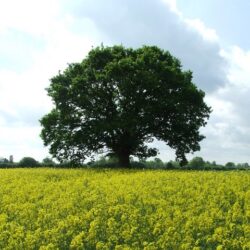💬 Haftarah Reading for Parashat Lekh Lekha (Isaiah 40:27-41:16): Chantable English translation with trōp, by Len Fellman
Source Link: https://opensiddur.org/?p=22106
open_content_license: Creative Commons Attribution-ShareAlike (CC BY-SA) 4.0 International copyleft license date_src_start: -0550-00-00 date_src_end: -0539-00-00 languages_meta: [{"name":"English","code":"eng","standard":"ISO 639-3"},{"name":"Hebrew","code":"heb","standard":"ISO 639-3"}] scripts_meta: [{"name":"Hebrew (Ktav Ashuri)","code":"Hebr","standard":"ISO 15924"},{"name":"Latin","code":"Latn","standard":"ISO 15924"}] Date: 2018-10-12
Last Updated: 2025-07-31
Categories: Yeshayah (Isaiah), Parashat Lekh Lekha
Tags: 21st century C.E., 58th century A.M., Cantillated readings in English, English Translation, transtropilation, הפטרות haftarot
Excerpt: The haftarah reading for Parashat Lekh Lekha in English translation, transtropilated. . . .
Contributor: the Mesorah (TaNaKh)
Co-authors:
-

Name: the Mesorah (TaNaKh)
Bio: The Mesorah (Heb: מָסוֹרָה) a/k/a, the Masoretic text is the authoritative Hebrew and Aramaic text of the TaNaKh for Karaite and Rabbinic Judaism. It was primarily copied, edited and distributed by a group of Jews known as the Masoretes between the 7th and 10th centuries CE. The Masoretic Text defines the Jewish canon and its precise letter-text, with its vocalization and accentuation known as the Masorah.
Website: https://en.wikipedia.org/wiki/Masoretic_Text
Profile Link: https://opensiddur.org/profile/mesorah
-

Name: Yeshayahu ben Amōts
Bio: Yeshayahu or Isaiah (Hebrew: יְשַׁעְיָהוּ, Greek: Ἠσαΐας, Ēsaïās; Latin: Isaias; "Yah is salvation") was the 8th century BCE Jewish prophet for whom the Book of Isaiah is named. According to the rabbinic literature, Isaiah was a descendant of the royal house of Judah and Tamar (Sotah 10b). He was the son of Amōts (not to be confused with Prophet Amos), who was the brother of King Amaziah of Judah. (Talmud tractate Megillah 15a). Within the text of the Book of Isaiah, Isaiah himself is referred to as "the prophet", but the exact relationship between the Book of Isaiah and any such historical Isaiah is complicated. The traditional view is that all 66 chapters of the book of Isaiah were written by one man, Isaiah, possibly in two periods between 740 BCE and c. 686 BCE, separated by approximately 15 years, and includes dramatic prophetic declarations of Cyrus the Great in the Bible, acting to restore the nation of Israel from Babylonian captivity. Another widely-held view is that parts of the first half of the book (chapters 1–39) originated with the historical prophet, interspersed with prose commentaries written in the time of King Yoshiyahu (Josiah) a hundred years later, and that the remainder of the book dates from immediately before and immediately after the end of the exile in Babylon, almost two centuries after the time of the historic prophet.
(from the article "Isaiah" on wikipedia)
Website: https://en.wikipedia.org/wiki/Isaiah
Profile Link: https://opensiddur.org/profile/yeshayahu-ben-amoz
-

Name: Len Fellman (translation)
Bio: Len Fellman is a mathematician, educator, and innovator of "transtropilation," the process of translating from cantillized Hebrew, as closely as possible, “word for word and trōp for trōp”, with the main purpose being to aid a person with minimal Hebrew training in following the Hebrew leyning of the Torah and Haftarah readings word for word.
Website: https://web.archive.org/web/20150926171914/http://toviar.home.comcast.net/~toviar/index.htm
Profile Link: https://opensiddur.org/profile/len-fellman-translation
Featured Image:

Title: haftarah-parashat-lekh-lekha-featured-image
Caption: Detail of transtropilated translation of a portion of the Haftarah for Parashat Lekh Lekha.




